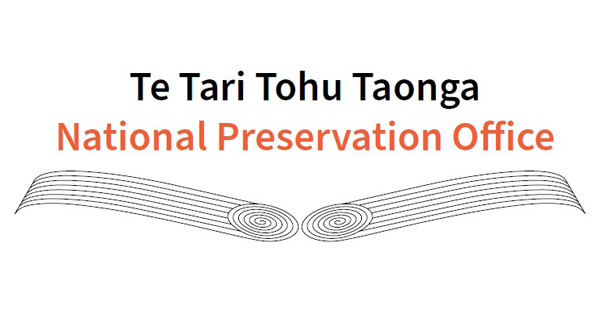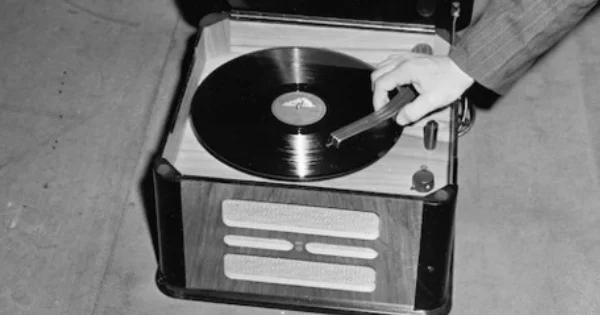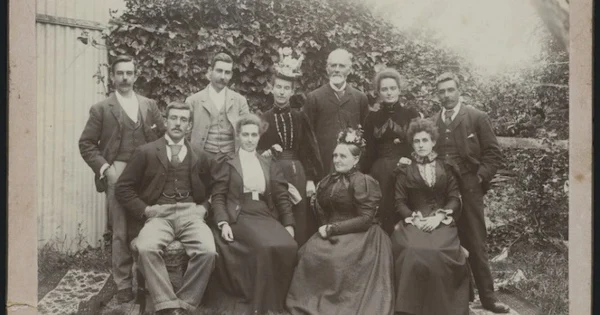
Digitisation of heritage audio collections
Find out about digitising heritage audio collections for access and preservations.
Download a PDF of the guide
This is a web version of Digitisation of heritage audio collections. You can download the guide in te reo Māori and English.
Te whakarorohiko kohikohinga puoro tuku iho (pdf, 2.9MB) — te reo Māori
Digitisation of heritage audio collections (pdf, 3.3MB) — English
Digitising for access and preservation
You may want to digitise your audio collections to make them more accessible, but it’s also an essential step in preserving that material for the future.
Original recording media will eventually degrade until it is unplayable, and the equipment required to play historic formats is fast becoming unobtainable.
As that happens, opportunities to digitise will be harder to come by. It is important to get it right first time; to make a high-quality digital copy that is as faithful to the original as possible, and to store it in a format that stands the best chance of providing sustainable access for a significant time.
Think of digitisation as part of the overall management of an audio collection. We recommend The Safeguarding of the Audio Heritage: Ethics, Principles and Preservation Strategy (IASA-TC03) as an overview and introduction to some of the issues.
The International Association of Sound and Audiovisual Archives (IASA) is world leading in its research, documentation and promotion of best practice for digitisation of sound collections.
The Safeguarding of the Audio Heritage: Ethics, Principles and Preservation Strategy
International Association of Sound and Audiovisual Archives (IASA)
Digitisation basics
When digitising audio material, be sure to follow these core principles.
Capture everything you can
In general, the more information you capture from an original recording during digitisation, the better. As well as the listed content, an audio recording contains noise, hiss, clicks and other audio artifacts.
Not only do these artifacts provide context and authenticity for the content, this secondary information improves the performance of computer-based processes such as auto-transcribing, voice recognition and audio restoration. Noises and clicks before and after content should be kept wherever practical to show completeness of the digital copy.
Sometimes a recording contains non-listed content: a section of audio that is not identified in collection records but may be valuable for contextual reasons, or even in its own right. Take care to ensure that non-listed content is not missed during digitisation.
Perceived inadequacies in the original recording are not justification for compromises in the quality of the digitisation. On the contrary, “poor” quality sources have the most to gain from future digital processing, and are the most need of contextual audio information for their interpretation.
Stay faithful to the source, and keep your variations separate
The initial goal of digitisation is a faithful reproduction of the original. Sometimes this is called a flat copy, preservation copy or archival master. The preservation copy is historically accurate, conveys the context of the recording and is arguably more aesthetically appealing.
Although you can use software to “improve” a digitised recording, imperfections inherent in the recording medium are a part of the document and should not be removed.
In some cases the quality of the original recording does significantly hinder efforts to interpret or reuse it. For example, it may be difficult to make out what is being said in an interview recorded at a low level with a lot of background tape hiss.
In these cases it may make sense to use technology to subjectively enhance the recording. However, you should perform this enhancement on a second digital copy, known as the enhanced copy. As this is a deviation from the source, you should document the process in detail.
Access copies are optimised for a particular distribution mechanism. This often means using a “lossy” format, such as MP3. Lossy formats make for greatly reduced file sizes because they contain far less information than the original or the preservation copy. Only the most noticeable details of the audio signal are retained, compromising audio quality in order to allow fast transmission within digital systems with limited data capacity.
When choosing an access format, consider the needs of your audience and the distribution mechanisms in question. If a high-quality preservation master copy has been kept, creating new access copies in a variety of formats takes little additional effort and expense.
Keep comprehensive metadata and documentation
Digitisation represents a significant change in the form of an audio recording. We recommend extensively documenting the process and equipment used in making the digital copy. Wherever possible you should keep this information in your collection management systems.
Some metadata will be produced automatically by the process, depending on your tools, but there will be more you can create manually. Metadata can uniquely identify the digital copy, reference the original source, and describe the technical process and equipment used – all useful information.
Don’t ditch the originals!
It is extremely important to keep the originals, even after digitisation. As physical objects the original recordings contain information that cannot be digitised. As artifacts the originals may have significance over and above the content they hold. And, however unlikely it may seem now, the future may yet provide us with new tools, techniques and options for accessing the original recordings.
For preservation purposes originals should be kept in controlled temperature and relative humidity conditions. Tape-online.net provides an excellent best practice guide, audio and video carriers for storage of audio media.
Plan for the management of your copies
You can expect 1 to 2 gigabytes (GB) of data per hour of audio digitised, if you follow the recommended standards. Have a plan for the storage, backup and ongoing management and preservation of this data.
Technical guidelines
For detailed information on best practice in audio digitisation, the IASA publication ‘Guidelines on the Production and Preservation of Digital Audio Objects’ (IASA TC04) is essential reading. The Alexander Turnbull Library uses TC04 as the core of our digitisation practices.
There are several factors that determine the quality of digitisation, and TC04 gives detailed coverage of each of these.
Guidelines on the Production and Preservation of Digital Audio Objects
IASA TC04 gives invaluable recommendations for each step of the digitisation process, including benchmark specifications for equipment. We recommend any digitisation provider reads, understands, and agrees to work to these guidelines.
Format and resolution for digitisation
Broadcast Wave (BWF) is the recommended format for audio digitisation. A BWF is essentially a WAVE (.wav) file with extended internal metadata to assist management and preservation of the audio content.
Digital audio quality is determined by encoding method, bit depth and sampling rate. For digitisation of analogue audio, IASA recommends PCM linear encoding, a minimum resolution of 24 bits and sampling rate of 48kHz. Sampling rates of 96kHz are commonly used.
Condition of the original media
Audio media are fragile and complex materials. They can suffer a variety of problems related to age and condition. These issues complicate digitisation, and if they are not treated properly before you start copying, they will contribute to a poor-quality copy or damage to the original media, or both.
If you are in doubt about the condition of your collection contact the National Preservation Office for guidance.
Quality of the playback equipment
Not all playback equipment can accurately reproduce the signal on historic media. Low-quality, worn or poorly maintained equipment puts original media at risk, and limits the quality of a digital copy.
Optimisation of playback for each recording
Depending on the format, you will need to correctly configure a number of technical settings to accurately reproduce an audio recording. Often these settings are not documented with the recording and may need to be set by experienced technicians. Recordings made on misaligned equipment may require specific re-alignment of playback equipment to achieve accurate results.
Quality of the analogue-to-digital converter
The analogue-to-digital converter (AD converter) measures the analogue signal thousands of times per second and stores the measurements as discrete samples. The accuracy and transparency of this process is a key factor in the quality of the digitisation.
Some AD converters are actually designed to “colour” the sound to make it more appealing. This is not appropriate for digitisation of heritage audio collections as, though subtle, it represents an irreversible distortion of the original. Instead, make alterations to enhanced copies (see above).
Monitoring of the digitisation
IASA recommends that a trained technician monitors all digitisation copying in real time. This helps to ensure the accuracy of the digital copy, problems are found early on, and original media is safe during copying.
Checklist for planning a digitisation project
We have created a ‘Heritage audio digitisation checklist’, which covers some of the things to consider in planning and carrying out a digitisation project.
Things to consider in planning and carrying out a digitisation project. This checklist helps you:
highlight decisions and actions that need to be made by those responsible for the collection, and
write requirements for a digitisation service, or evaluate a proposed digitisation service.
What is known about the collection to be digitised?
all known documentation about the collection has been assembled
number of items in the collection
format of each item (for example, cassette tape)
age and condition of each item
duration of content on each item
the best copy has been selected for digitisation, where multiple copies exist
What are the digitisation deliverables?
preservation copy – 24 bit, 48kHz BWF minimum, 96kHz advisable
access copy – format chosen
documentation and metadata – type and delivery method chosen
file naming of digital copies set – suits your collection management system - - digital copy delivery method set
What provision has been made for the management and preservation of the digital copies?
storage
backup
access
disaster planning
Does the proposed digitisation process meet IASA recommendations for:
provision for expertise to identify and treat problematic media (TC04)
provision for expertise to correctly optimise playback (TC04)
provision for digitisation in real time, actively monitored (listened to) by a trained technician
Does the proposed digitisation equipment meet IASA technical recommendations for:
analogue-to-digital converters
playback equipment and maintenance
digital format and resolution
What quality-control measures are proposed to ensure delivery of accurate, error-free digital copies?
Checking that audio is not missed.
Checking for audio errors, such as dropouts in the digital file.
Checking for data errors, such as corrupt files, incomplete files.
What is proposed to cover safety and security of heritage material during digitisation?
building security and environment
care and handling
in a disaster
intellectual or ethical restrictions surrounding listening to the recordings
Does the proposed digitisation process produce appropriate documentation and metadata?
condition report for the original media
technical report specifying the equipment and process used for each recording and detailing any problems encountered
BWF metadata detailing digital provenance and unique identification of each file
Is there an agreed process for dealing with:
problematic media
non-listed audio content
disposal of temporary copies
Download the ‘Heritage audio digitisation checklist’ (pdf, 51KB)
Need help?
Get in touch with the National Preservation Office if you need advice about digitising your heritage audio collections.
Email — preservation@dia.govt.nz
Phone — 04 474 3000
References
IASA Technical Committee, Guidelines on the Production and Preservation of Digital Audio Objects, ed. nā Kevin Bradley. Whakaputanga tuarua 2009. (= Standards, Recommended Practices and Strategies, IASA-TC 04).
Schüller, D., Audio and Video Carriers: Recording Principles, Storage and Handling, Maintenance of Equipment, Format and Equipment Obsolescence. 2008.
Acknowledgements
The National Preservation Office acknowledges the work of Conservator, Audiovisual Media, Nick Guy, with advice from Senior Sound Conservator, Bronwyn Officer, and Curator Oral History and Sound, Linda Evans, of the Alexander Turnbull Library in the preparation of this guide.
Related content

Help from the National Preservation Office
Find out how the National Preservation Office can help you. There is also a list of other conservation organisations and services that may be of assistance.
Sound recordings
Sound recordings may start to deteriorate within a few years if they are not cared for. Here are things you can do to preserve them.
Family collections
Family collections often consist of precious but fragile items: letters, newspaper collections, certificates and scrapbooks. This guide gives advice on protecting these collections.Tape spooling on a Studer A810 tape recorder in preparation for playback and digitisation. More information in blog post Flying Nun in the studio